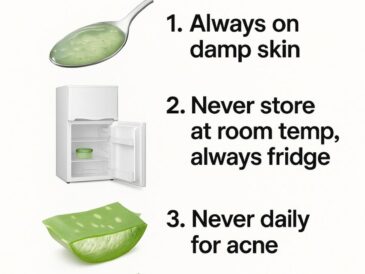Apple cider vinegar (ACV) has been hailed as a miracle cure for a variety of ailments, from weight loss to dandruff treatment, and even skincare. However, many people are not using it correctly, which can lead to disappointment and even adverse effects. This article aims to clarify the right ways to harness the benefits of apple cider vinegar.
Despite its popularity, apple cider vinegar is often misunderstood and misused. While it’s a potent natural remedy, caution and understanding of its properties are essential for safe and effective use. Let’s explore the common mistakes and the correct applications of apple cider vinegar.
1. Understanding the Basics of Apple Cider Vinegar
Apple cider vinegar is made by fermenting apples with yeast and bacteria, turning the sugars into acetic acid. This acetic acid is what gives ACV its characteristic sour taste and strong smell, as well as its purported health benefits. The typical concentration of acetic acid in ACV is around 5-6%.
To leverage its benefits, it’s crucial to use raw, unfiltered apple cider vinegar, which contains the ‘mother’—a combination of yeast and bacteria that forms during fermentation. This ‘mother’ is believed to be rich in proteins, enzymes, and friendly bacteria, contributing to its health benefits.
2. The Mistake of Applying Directly to the Scalp for Dandruff
Many people apply apple cider vinegar directly to their scalp, believing it will combat dandruff effectively. However, applying it undiluted can lead to scalp irritation and dryness due to its high acidity. This can exacerbate dandruff rather than alleviate it.
It’s important to dilute ACV before using it on your scalp. A common dilution ratio is 1 part ACV to 3 parts water. This helps to reduce the risk of irritation while still providing the antifungal and antibacterial properties that can help manage dandruff.
3. Correct Use for Dandruff: Behind the Ears and Neck
Instead of applying apple cider vinegar directly to your entire scalp, focus on specific areas where dandruff is most prevalent, such as behind the ears and at the back of the neck. These areas can often harbor more oil and bacteria, contributing to dandruff.
After diluting the vinegar, use a cotton ball or swab to apply it to these targeted areas, and leave it on for 10 to 15 minutes before rinsing thoroughly with water. This targeted approach minimizes the risk of irritation while maximizing the vinegar’s benefits.
4. Common Missteps in Using Apple Cider Vinegar for Weight Loss
One of the most common uses of apple cider vinegar is for weight loss, with many people believing that consuming it will magically melt away pounds. However, drinking it undiluted can harm your esophagus and tooth enamel due to its acidity.
Moreover, relying solely on ACV for weight loss without any dietary or lifestyle changes is unlikely to yield significant results. It’s crucial to incorporate it as part of a balanced diet and exercise regimen.
5. Optimal Timing: Why Bedtime is Best for Weight Management
Studies suggest that consuming apple cider vinegar before bedtime might help regulate blood sugar levels, which can aid in weight management. By stabilizing blood sugar levels overnight, ACV may help reduce morning blood sugar spikes that contribute to weight gain.
To incorporate ACV into your nighttime routine, mix 1-2 tablespoons of it in a glass of warm water and consume it 30 minutes before bed. This method can enhance its benefits without exposing your teeth to acidity for extended periods.
6. Misconceptions About Apple Cider Vinegar in Skincare
Apple cider vinegar is often touted as a natural toner or acne treatment due to its antibacterial properties. However, using it undiluted on your skin can cause severe irritation and burns, particularly for those with sensitive skin.
Additionally, not everyone benefits from ACV in skincare, as it can disrupt the skin’s natural pH balance, leading to dryness or increased oil production.
7. The Moonlight Mask: Nighttime Application for Clearer Skin
For those who wish to try apple cider vinegar in their skincare routine, a nighttime application is recommended. To make a ‘moonlight mask,’ dilute 1 tablespoon of ACV in 2 cups of water, and gently apply it to your face with a cotton pad after cleansing.
Leave it on for a few minutes, then rinse with lukewarm water. This diluted solution can help clear the skin and reduce acne-causing bacteria without causing irritation. Always conduct a patch test first to ensure compatibility with your skin.
8. Detoxing with Apple Cider Vinegar: Avoid Daily Use
Many people believe in the detoxifying properties of apple cider vinegar and consume it daily. However, excessive use can lead to decreased potassium levels and bone density due to its diuretic effects.
Instead of daily consumption, it’s more beneficial to use it intermittently, allowing your body to maintain its natural balance of electrolytes and nutrients.
9. Effective Detox Routine: Every Third Day
For a safe detox routine, consider consuming apple cider vinegar every third day. Mix 1-2 tablespoons in a large glass of water and drink it on an empty stomach.
This routine allows your body to reap the benefits of ACV’s detoxifying properties without the risk of nutrient depletion or digestive upset. It’s important to listen to your body and adjust the frequency based on how you feel.
10. Popular Viral Hacks: Separating Fact from Fiction
Social media is filled with viral hacks involving apple cider vinegar, from teeth whitening to sunburn relief. However, many of these hacks are not backed by science and can be harmful.
For instance, using ACV for teeth whitening can erode enamel over time, and applying it to sunburns can worsen irritation. It’s crucial to research and verify any hack before trying it, relying on credible sources and scientific evidence.
11. Maximizing Benefits: Dos and Don’ts for Everyday Use
To maximize the benefits of apple cider vinegar, always dilute it before use, whether for consumption or topical application. This reduces the risk of irritation and damage from its acidity.
Pair ACV with a healthy diet and lifestyle for best results, and be cautious with the frequency of use to prevent adverse effects. Avoid mixing ACV with certain medications without consulting a healthcare professional, as it can interact with diuretics and insulin.




